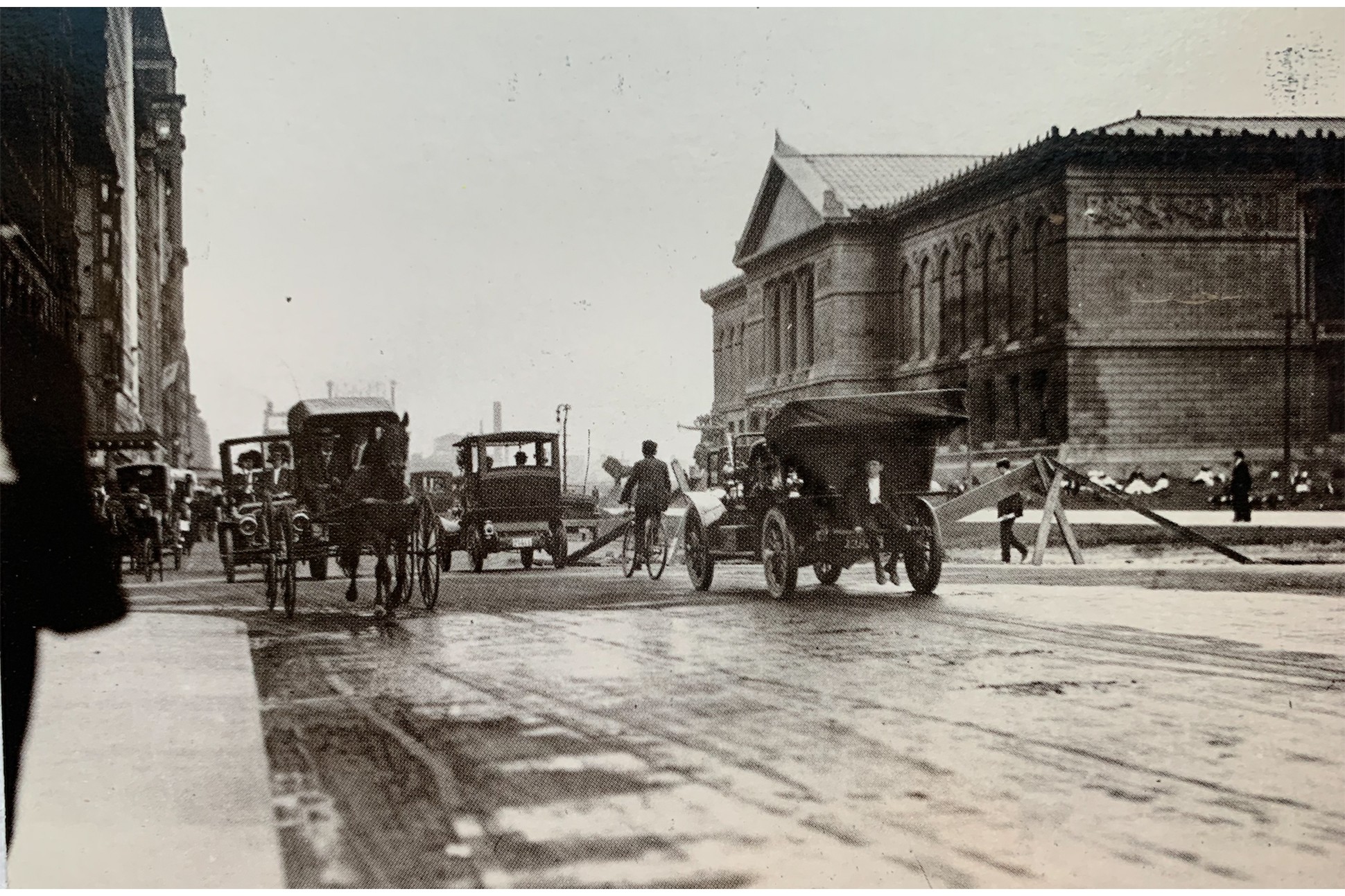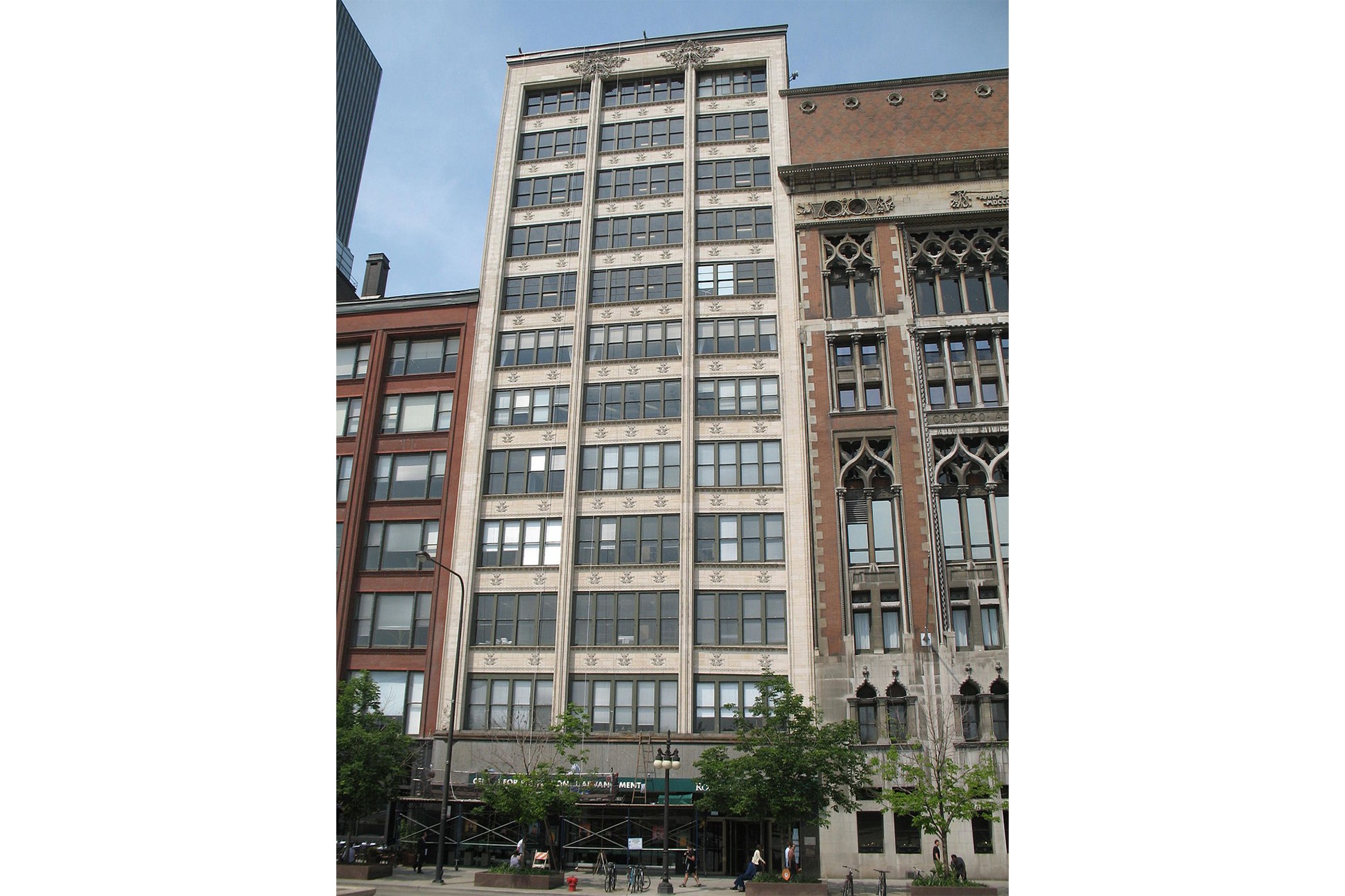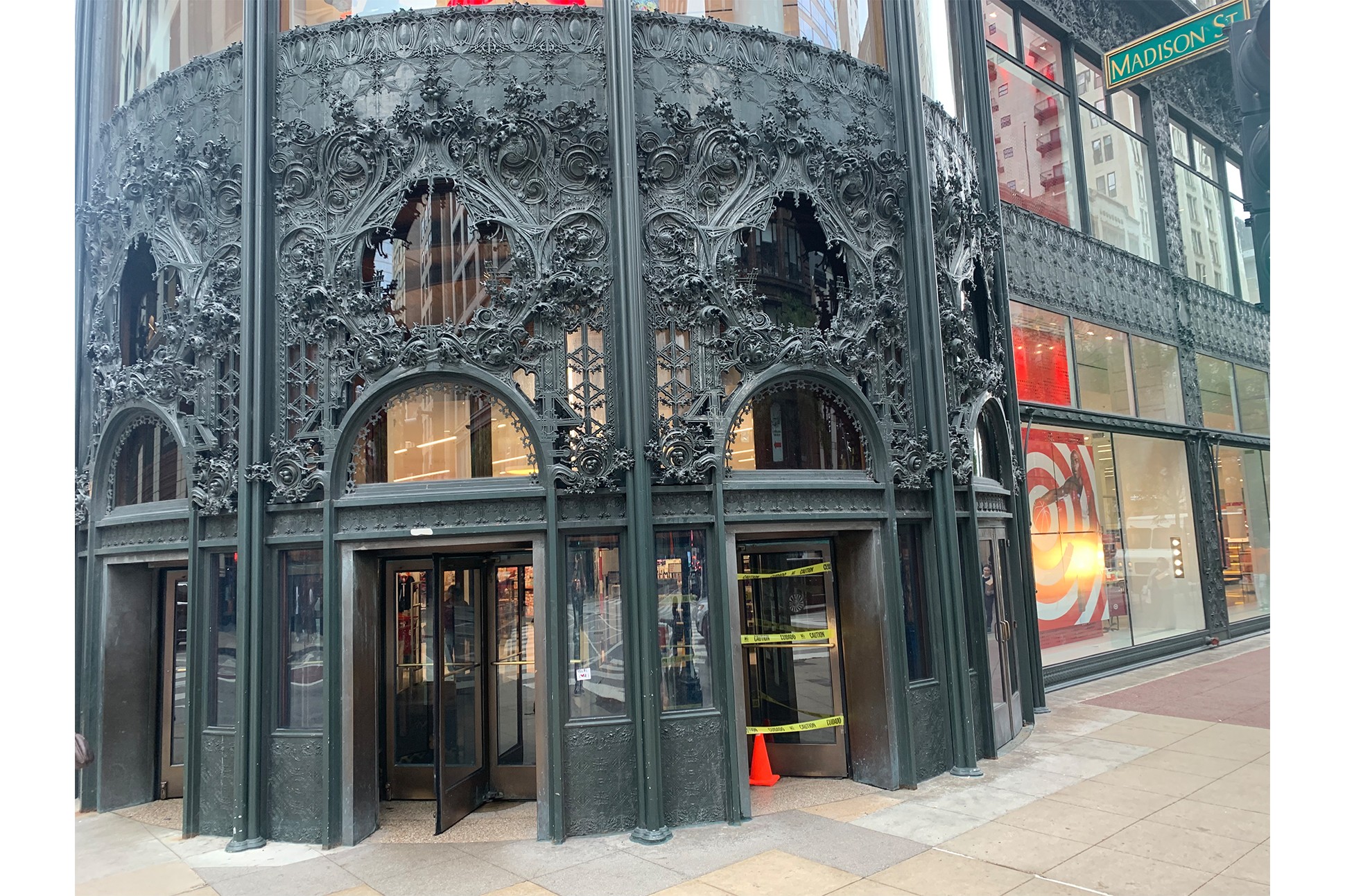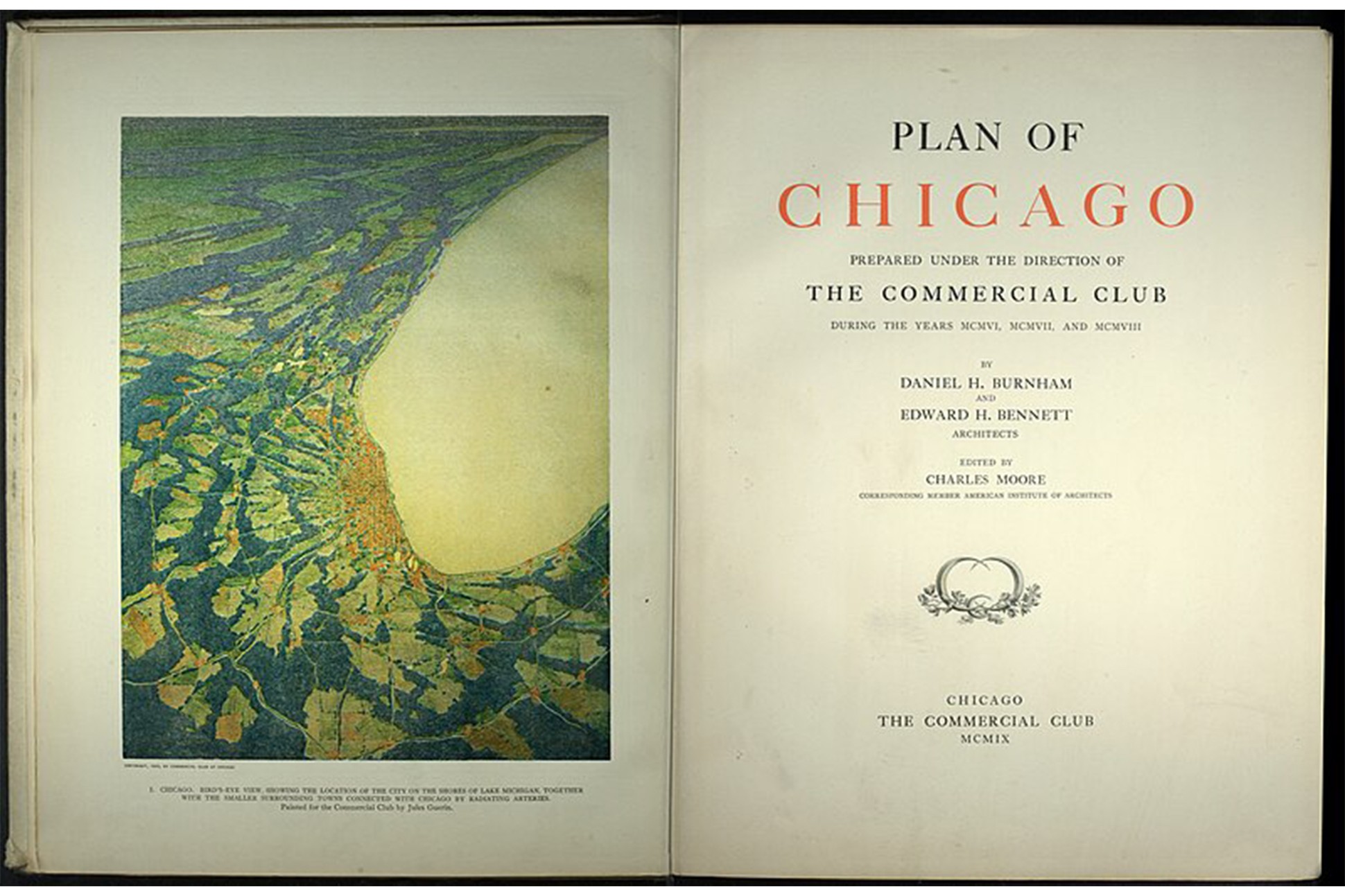Harriet Monroe’s City Beautiful

Harriet Monroe’s own words below are italicized and taken from her reviews in the Chicago Daily Tribune. Read from Monroe’s review, “Task Confronts Architect to Meet Modern Era.”
Architecture and poetry are the basic, the fundamental arts. … All the special pleaders in the world … cannot lessen the importance of these two in the expression of human needs and aspirations.
Harriet Monroe, “Task Confronts Architect to Meet Modern Era.” Sunday, April 14, 1912
Harriet Monroe’s reviews cover an exceedingly broad, sophisticated range of topics; she once modestly described herself as a “varietist.” Besides discussing a specific exhibition or artist, a typical review might also devote space to her travels, to national debates, and to the fabric of the city itself––Chicago’s architecture and civic projects.
Monroe espoused the principles of the Progressive-Era “City Beautiful” movement, which sought to improve citizens’ well-being through a commitment to aesthetics and thoughtful city planning. Even so, as the above quote makes clear, poetry was never far from her mind. Monroe’s observations about how her readers should experience their city sprang from the same source that determined how they should read the verse in her Poetry magazine.
Her reviews demonstrate a deep understanding of Chicago’s unique architecture. As the first woman to publish criticism about it, Monroe made bold, informed pronouncements largely in line with the opinions of artists and critics today. Moreover, her biography of her beloved, deceased brother-in-law, John Wellborn Root: A Study of His Life and Work (Houghton, Mifflin, 1896), was the earliest on a Chicago School architect and the first penned by a woman.
Monroe’s critiques of individual buildings were based on firsthand observations. She experienced Chicago architecture by simply going outside to look, and she encouraged her readers to do the same. (An inveterate walker, Monroe was struck by cars on two separate occasions while crossing Michigan Avenue.)
Besides viewing buildings firsthand, she regularly reviewed exhibitions of plans and drawings, especially those of the Architectural Club at the Art Institute of Chicago. Her international travels further exposed her to the celebrated structures of several world-class cities against which she compared local architecture. Monroe had also seen the construction of the 1893 World’s Columbian Exposition’s “White City,” having lived on-site for a time, and witnessed the transformation of Chicago’s Loop into a forest of skyscrapers.
Across several reviews, Monroe protested that architects were not appreciated enough in the United States. They, more than any other artists of our age, are building its enduring monument. … The American architect, in short, has had a bigger job on his hands than any other artist of our time. Like contemporary poets, architects had to confront the demands of their audience along with myriad questions of influence and style.
When she applied a very early use of the term “Chicago School,” Monroe believed, as we do today, that the Chicago architects Louis Sullivan and Frank Lloyd Wright were revolutionaries. About the latter, Monroe rightly observed that this was due in part to his influence, which
[came] from … Japan. In Mr. Wright’s houses … lowness is emphasized; there are no curved roofs, but there is a strong repetition of horizontal lines, which are drawn out over long courts or wide eaves beyond the main structure. …
Although the inspiration came from afar, Monroe noted: [Wright] is devoting his professional career to an effort to give us an authentic … architecture. Authenticity was a quality she aimed to amplify in the American verse she published in Poetry.
Monroe showed a prescient awareness of Sullivan’s importance by claiming that he represent[ed] all that is most original and honestly expressive in American architecture. However, she was saddened that Chicago had shown a too slight appreciation of that great modern architect … She lamented, his buildings, far and near, are but a fraction of those we should have demanded of him. … The future will count his works when most of our architects are forgotten.
a too slight appreciation of that great modern architect … his buildings, far and near, are but a fraction of those we should have demanded of him .... The future will count his works when most of our architects are forgotten.
Monroe saw a spare beauty in Sullivan’s largely unadorned Gage Building on Michigan Avenue, [which showed] with what architectural consistency a narrow skyscraper façade of terra cotta, iron, and glass may be expressed.
Despite her admiration for the pared-down modernism of the Gage, she also loved how in the Carson-Pirie building [today Target’s State Street store] the iron work [around the entrance] blossoms into a profusion of delicate ornament justified by the purpose of the structure.
Monroe’s estimation of why Sullivan’s architecture was important, and her conviction that a building’s ornament needed to be justified by its purpose, demonstrate her advanced understanding of the ethos of modern commercial buildings. [Sullivan] has discarded the classical orders in favor of a system of design which admits of a franker expression of modern steel construction and of the materials used in its enclosing envelope. Her critique sounds like that of a contemporary architectural historian.
Apparently intuiting Sullivan’s famous “form follows function” approach to the modern commercial building, Monroe asserted
Use and beauty are absolutely synonymous. Each in the highest sense implies the other. … the plan most simply and directly expressive of the problem, will necessarily be the most beautiful one, and only through beauty can the highest usefulness be achieved.
This sensitivity to the inextricable relationship between formal aspects and conveyed meanings is also seen in the diversity of verse forms she published in Poetry. It is also seen in her own poetry, which ranged from the wordy Columbian Ode, sung by a chorus at the World’s Fair, to her pithy Imagist poems, some published in The Atlantic, decades later.
Monroe had little tolerance for the white, classicized buildings that were springing up everywhere in American cities. To her mind, they were part of the incomprehensible mania for white buildings which [had] persisted in this country ever since our famous ‘White City,’” the name for the neoclassical buildings built for the 1893 World’s Columbian Exposition in Chicago.
The beauty of the Columbian exposition was rather in spite of its whiteness than because of it, she claimed, bucking popular admiration for the style. [It was] merely a confession of weakness and haste on the part of those who had been hindered by countless obstacles in their efforts to get the fair ready on time. Her brother-in-law, John Wellborn Root, had spoken of this to her, and the historical record confirms the classic Chicago rush to finish (the World’s Fair opened months late).
As she was in other arts, Monroe was willing to challenge current taste and conventions in architecture. For instance, she critiqued buildings mindlessly based on past models. As a people we are too timorous and colonial in matters of taste, she argued. We are afraid of new forms and suspicious of native genius. Even when confronted with such a wholly modern problem as a skyscraper or a railway station we fall back upon Greek or Gothic colonnades and ornaments. Similarly, in the verse she considered for publication in Poetry, she resisted gratuitous novelty but recoiled sharply at verse based on an outdated historicism.
Monroe was committed to a broad-ranging modernism that expressed structural honesty, authentic expression, and a high level of craft. If she had had her way, all the structures along Michigan Avenue would be examples of Chicago School modernism: Every building which fronts that wide expanse of park and lake should be a proud example of the new architecture, she announced. Monroe even imagined entire Chicago college campuses executed in a modern style.
If the trustees of the University of Chicago had been adventurous enough to trust Louis Sullivan with their project, it is certain that he would have given them … something which tourists of the far future would visit as eagerly as we visit Oxford. Still more radical would be the college board who should entrust their campus to Frank Lloyd Wright.
Her vision was far from absurd: three decades later, Ludwig Mies van der Rohe, the inheritor of Sullivan and Wright’s modernism, was invited to construct dozens of buildings for Chicago’s Illinois Institute of Technology main campus.
Monroe understood the history of Chicago architecture earlier and more intimately than most, but she was by no means simply a civic booster dispensing compliments. Her critiques could be withering. For instance, writing about architect Jarvis Hunt’s Naval Base in Lake Bluff, Illinois, Monroe informed her readers that [Hunt]was offered a beautiful site, and some three millions or more to spend on buildings and grounds. It was a magnificent opportunity. …
But, in her estimation, it [was] one of the saddest disappointments which ever affronted the people’s hopes.
Indeed, failed buildings were different in kind from those in other creative projects.
Architecture, more than any of the smaller arts, is enduring and inescapable. A bad play is but a moment’s misery; a bad picture may be banished to the attic; even a bad statue … may be deposed from its pedestal; but bad buildings … must in all probability stay where they are until the crack of doom.
In her mind, everyone shared responsibility for architecture. It becomes, therefore, an imperative public duty to hold their designer strictly to account before the people of Illinois and of the nation.
In a version of Walt Whitman’s “great poets demand great audiences,” which became a motto of Poetry. Monroe claimed: We should demand the utmost of our architects. For what the public demands it gets, and only when it demands great art is the most brilliant genius able to provide it. Not just for individual buildings, Monroe’s critical lens addressed the topography and inhabitability of the city—even well into the future.
Besides considering individual buildings, Monroe’s art reviews monitored the city’s progress in planning and beautification. In this, she urged her readers: We should live in the future, as our fathers did … They planned a metropolis strategically; we should plan it commercially and artistically. For Monroe, commerce and art always had to be considered together.
Monroe’s art criticism uniquely blended lofty spiritual ideals with street-level practicality. She was convinced of the human value of an aesthetically pleasing city. First, beauty is a health producer, she claimed, looking forward to wellness movements a century later. Hideous objects and harsh sounds … destroy the harmony of life … beautiful surroundings are an inspiration, a cause of strength to the spirit. She asserted:
Beauty is a commercial asset in any community. … Without [it] a city is merely a place to make money in and get away from. … Beauty … is the best investment any city can make; it brings the largest, the surest, the most permanent returns. Why does the whole world flock to Italy, spending there millions every year? Because a few centuries ago a few hundred artists built and carved and painted beautifully.
In 1909, to address the need for greater organization and health-promoting spaces, the architect Daniel Burnham, sponsored by the Commercial Club, produced a visionary scheme for the improvement of Chicago. Monroe adored this brash dean of Chicago architecture, whom she called a man of power whose power was founded on faith—faith both in the big thing to be done and in the desire and capacity of the people to do it in the best way. Burnham had been a champion in what Monroe strikingly described as the struggle for beauty in our great scrambling, half-awake prodigy of a country.
Monroe was awed and delighted by the audacity of Burnham’s plan, which picks up the loop and throws it away [and] which boldly moves the center of the town across … the river. However, much about the plan was simply too ambitious. Monroe pleaded with her readers that, while it would doubtless be modified, Burnham’s plan should not be ignored. She wrote: It should not be cast aside as the impracticable ideal of visionary enthusiasts. Every day sees the accomplishment of some impracticable ideal—are not men flying in the air, and is not the north pole discovered at last?
Her insistence that the “whole people” enact the plan, not just city planners and elites, was a populist, Progressive-Era ideal. [The plans] should not be left, she warned, to the narrow self-interests of the moment but should be decided by the public spirit of the whole people [who should] test it by the future. Here, again, she appealed to the passage of time as a way of judging the plan’s value, something she applied in her estimation of every kind of creative endeavor.
Monroe urged her readers to look critically at their own city even as she provided them with new ways of thinking about and discussing it. Based on her firsthand observations of buildings, plans, and renderings, Monroe earned a place as a major contemporary voice on Chicago architects and architecture. She was convinced that both the American city and American letters demanded a rewarding evolution––and, as ever, an attentive, informed, and worthy audience.
Mark B. Pohlad (he/him) is an associate professor in the History of Art and Architecture department at DePaul University. He earned his PhD from the University of Delaware and teaches courses on modern and American art and on Chicago topics. In 2017, Pohlad facilitate the discussion of Harriet Monroe’s art...
-
Related Collections
-
Related Authors
- See All Related Content







